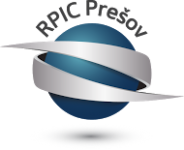Summary:
A Korean SME is seeking partners providing the automatic control technology to combine with their products, plasma lights. They wish to apply the technology in order to automatically control their lighting system especially when they are installed for naval vessels, patrol boats, and maritime rescue ships. The company is looking for a partner who can cooperate under technical cooperation agreements.
Description:
A Korean SME, founded in 2013, is specialized in developing and producing electronic equipment related to renewable energy, typically plasma lights. The firm is looking for a partnership with a company that has *automatic control technologies. With that cooperation, the Korean company wishes to combine the technique with their plasma lights in order to make them be controlled automatically, especially when they are installed into naval vessels, patrol boats, and maritime rescue ships. They are looking for a partner to cooperate with under technical cooperation agreements.
*Plasma lighting systems:
Eco-friendly lighting systems, that are electrodeless metal halide lamps that produce light directly from an arc discharge operated under high pressure.
*Automatic control:
-Definition:
Automatic control is the application of control theory for the regulation of processes without direct human intervention, to automatically maintain the desired outcome.
-Market Trend:
The mathematical basis of control theory was begun in the 18th century, and advanced rapidly in the 20th, becoming one of the most important high technologies in the 21st century.
-Principle:
Automatic controls are designed to handle dynamic situations where there are unplanned changes. The three components of automatic control systems are the process variable, the control variable, and the controller.
1. A process variable is the dependent variable that is to be controlled in a control system.
2. A control variable or manipulated variable is the independent variable that is used to adjust the dependent variable, the process variable.
3. A controller is a device that compares a process measurement to a setpoint and changes the control variable to bring the process variable back to the setpoints.
In the simplest type of an automatic control loop, a controller compares a measured value of a process with a desired set value, and processes the resulting error signal to change some input to the process, in such a way that the process stays at its set point despite disturbances. This closed-loop control is an application of negative feedback to a system.
Designing a system with features of automatic control generally requires the feeding of electrical or mechanical energy to enhance the dynamic features of an otherwise sluggish or variant, even errant system. The control is applied by regulating the energy feed.
Type (e.g. company, R&D institution…), field of industry and Role of Partner Sought:
The Korean company is seeking a partner company under technical cooperation agreements.
Technical Specification or Expertise Sought:
The Korean firm is looking for a partner company that has automatic control technology so that they can cooperate and develop together for making their plasma lights to be automatically controlled when they are installed into vessels.
External code:
TRKR20211101001








